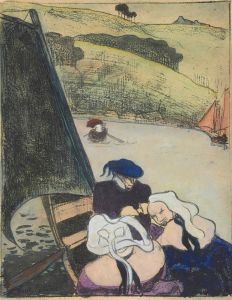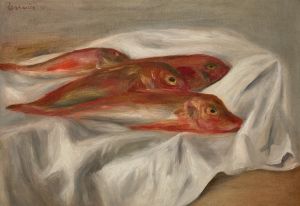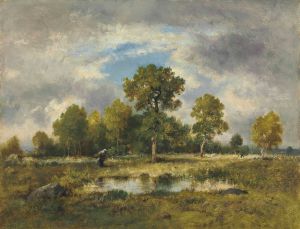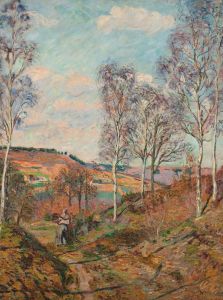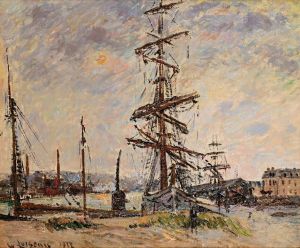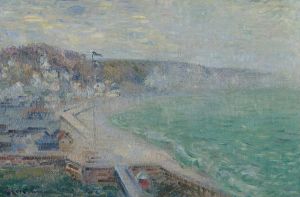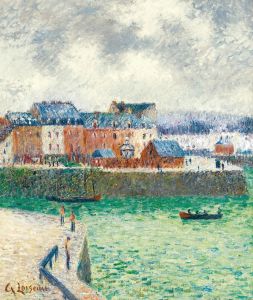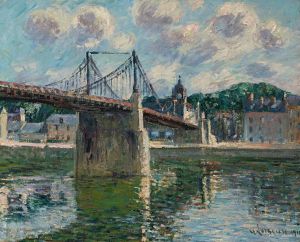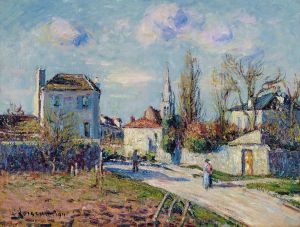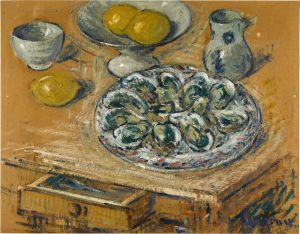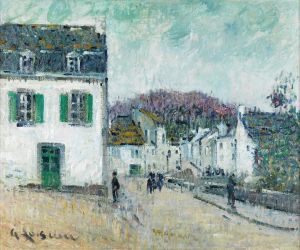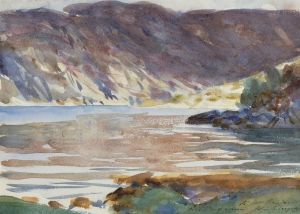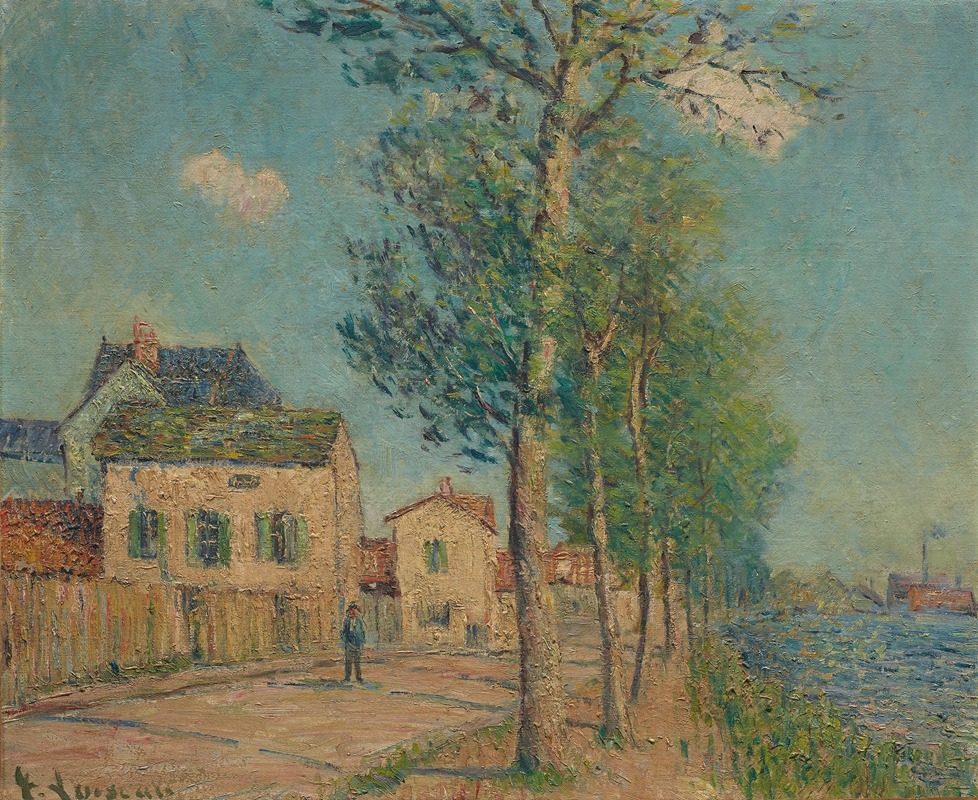
Le Chemin au bord de la rivière
A hand-painted replica of Gustave Loiseau’s masterpiece Le Chemin au bord de la rivière, meticulously crafted by professional artists to capture the true essence of the original. Each piece is created with museum-quality canvas and rare mineral pigments, carefully painted by experienced artists with delicate brushstrokes and rich, layered colors to perfectly recreate the texture of the original artwork. Unlike machine-printed reproductions, this hand-painted version brings the painting to life, infused with the artist’s emotions and skill in every stroke. Whether for personal collection or home decoration, it instantly elevates the artistic atmosphere of any space.
Gustave Loiseau (1865–1935) was a French Post-Impressionist painter known for his landscapes and depictions of rural France. His works often focused on the changing seasons, light, and atmosphere, showcasing his mastery of color and texture. One of his notable paintings, Le Chemin au bord de la rivière (The Path by the River), exemplifies his dedication to capturing the serene beauty of the French countryside.
This painting depicts a tranquil riverside scene, with a path winding alongside the water. Loiseau’s characteristic brushwork, often described as "en treillis" (in a lattice-like pattern), is evident in the textured rendering of foliage and reflections in the water. The composition draws the viewer’s eye along the path, inviting them to imagine walking through the peaceful setting. The use of light and shadow in the painting reflects Loiseau’s interest in the effects of natural light, a hallmark of the Impressionist and Post-Impressionist movements.
Loiseau was deeply influenced by the Impressionists, particularly Claude Monet, but he developed his own distinct style. He was associated with the School of Rouen and often painted en plein air, directly observing and capturing the landscapes around him. His works frequently featured rivers, villages, and rural paths, making Le Chemin au bord de la rivière a quintessential example of his oeuvre.
The exact date of the painting is not specified, but it is consistent with Loiseau’s body of work from the late 19th and early 20th centuries. During this period, he focused on portraying the idyllic and unspoiled nature of the French countryside, often revisiting the same locations to study the effects of light and weather at different times of the day and year.
Loiseau’s paintings, including Le Chemin au bord de la rivière, are celebrated for their ability to evoke a sense of calm and nostalgia. Today, his works are held in various private collections and museums, including the Musée d'Orsay in Paris, which houses several of his notable pieces. While specific details about the provenance or current location of Le Chemin au bord de la rivière are not readily available, it remains an important example of Loiseau’s contribution to Post-Impressionist art.
This painting reflects Loiseau’s commitment to capturing the essence of rural France, preserving its beauty for future generations to appreciate. His work continues to be admired for its technical skill and its ability to transport viewers to the serene landscapes he so lovingly depicted.





